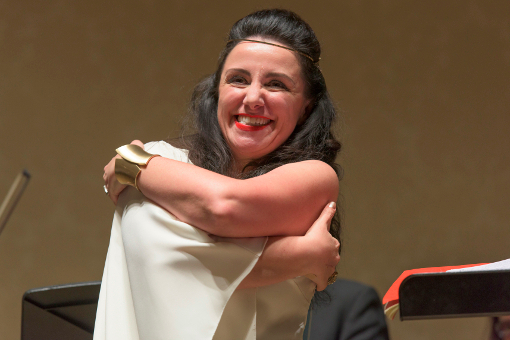Ms Bonitatibus was in terrific form, which was just as well given the demanding programme

Rating: ★★★★
By Travis Mason for bachtrack, 08 October 2016
Italian mezzo-soprano Anna Bonitatibus is well known as an operatic singer, including a variety of trouser roles, being very much the go-to Cherubino for any star-studded Marriage of Figaro, a part she has made her own. She brought her sense of operatic drama to this Wigmore Hall recital of a programme with which she is touring Europe, namely works inspired by Assyrian Queen Semiramide, who lived and ruled in the 9th century BC. Semiramide founded Babylon and her life and subsequent Greek myths were a source of opera libretti addressed by myriad composers through the 17th, 18th and 19th centuries.

The concert followed a chronological march through many of those composers, ranging from one of the better known, Antonio Caldara (born ~1671) and ending with Manuel García (1775) via a Handel pastiche, a further six near-forgotten composers and two famous ones, Gluck and Rossini. Anna Bonitatibus was joined by the Prague-based Collegium 1704 orchestra, also making their debut at Wigmore Hall, and they played with enthusiasm and obvious pleasure. That their conductor was also the founder of a chamber choir of the same name was evident in his expansive and expressive attention to individual sections, and their dynamic variation. Theirs was quite a dusky sound, complementing the singer’s full and resonant voice, which was quite capable of filling the entire hall with rich harmonics without recourse to excessive vibrato.
Ms Bonitatibus was in terrific form, which was just as well given the demanding programme. In truth, several of the works were from a similar mould and, with 24 hours distance, somewhat indistinguishable; all required the full mezzo range and occasional moments of deep chest voice but mostly fiery, fast coloratura – the sort of repertoire Cecilia Bartoli might sing – launched with gusto, feeling and commitment. She was also perfectly at ease in the temporal trip through the Baroque, Classical and into the bel canto arena, adapting her sense of expression and lyricism to each. A change of evening frock for each set added to the drama of the evening and indeed the sense of moving through time.

The majority of the pieces were unknown in modern times before being unearthed by Bonitatibus a few years ago. I particularly liked that by Ferdinando Bertoni. Rick Jones’s comprehensive programme notes explained that Bertoni followed in Vivaldi’s footsteps as a teacher in Venice and organist of St Mark’s Basilica, and his brief, reprised verses about love’s arrow put the spotlight on the singer’s strong but flexible upper register with supremely confident ornamentation.
For the post-interval programme, the stage became even more crowded as the removal of the harpsichord left room for extra woodwind and horns. Of the two dances by Charles-Simon Catel, attention was commanded by the second as a light but charming balletic interlude from some weighty drama.
The thread of inter-connection was maintained through the whole programme, with a piece from Rossini‘s operatic score – the last one he composed for Italy. García himself had sung the tenor part in London in 1824 and, after all the fireworks, it was García’s quiet lament that brought the concert to a reflective close. Starting with a brief recitative, and subsequently accompanied only by woodwind and horns, it gave Bonitatibus the space to remind us that for all her technical skill, she can enchant an audience with effortless simplicity. Altogether an exhilarating evening of rarities and novelty, sung with full blooded rigour and moments of quiet poignancy.